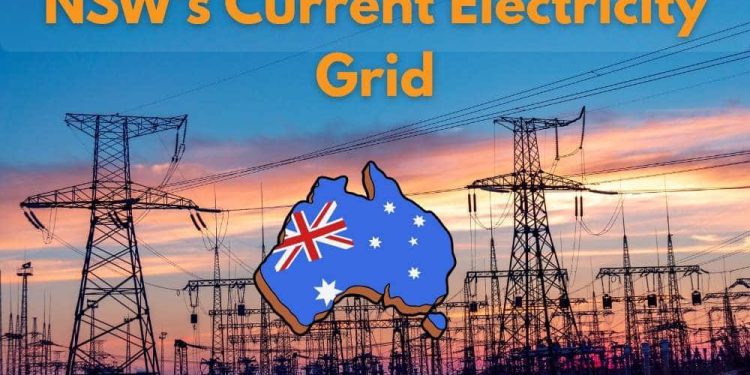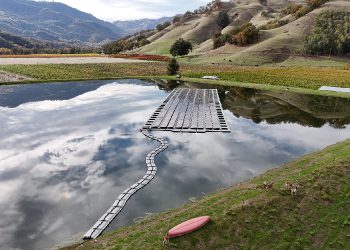No state sits more squarely in the path of Australia’s clean energy transition than New South Wales (NSW). It’s home to the country’s biggest electricity demand, the oldest coal fleet, and some of the most ambitious renewable rollout targets on record. As the grid’s backbone for households and heavy industry, NSW is where the success (or failure) of the national transition will be tested first.
But progress here isn’t simple. Coal plants that once powered millions of homes are preparing to close within the decade, while renewable projects and new transmission lines are racing against the clock to fill the gap. The grid is undergoing its most complex rebuild in a century, one that must balance reliability, affordability, and decarbonisation without leaving communities or industries behind.
In this first part of our Electricity Grids: State by State series, we explore the pressures shaping NSW’s electricity network: where it’s strong, where it’s struggling, and what its next decade means for the rest of the nation.
The current grid
NSW relies on one of the most complex and heavily loaded electricity networks in the country. Its grid serves more than eight million residents, linking urban centres, industrial zones, and sprawling rural communities across vast distances. The backbone of that system has long been coal. Even today, four major coal-fired power stations, Eraring, Bayswater, Mount Piper, and Vales Point, supply the majority of the state’s electricity. Together, they account for over half of NSW’s generation capacity, a figure that underscores just how deep the state’s dependence on fossil fuels still runs.
Yet that balance is shifting. Over the past five years, NSW has seen a surge in renewable generation, particularly from rooftop solar. Around one in three homes now generate their own electricity, feeding daytime surplus back into the grid and reshaping demand curves. Utility-scale solar farms and wind projects have expanded across the Central West, Riverina, and New England regions, creating new power corridors that didn’t exist a decade ago.
Still, this transition has exposed cracks in the system. Much of the state’s transmission infrastructure was designed for a centralised, one-way flow of energy, from big power stations to consumers. The rise of distributed generation means electricity is now flowing in both directions, at times overwhelming substations and lines built for a different era. The grid’s age compounds the problem: some key transmission routes date back to the 1960s and are struggling to handle modern loads.
The pressure isn’t just technical. NSW’s energy market sits at a delicate crossroads, balancing household affordability, investor confidence, and environmental commitments. With coal closures on the horizon and renewable projects not yet keeping pace, the state faces an energy mix in transition, not yet stable but impossible to turn back.
Managing coal closures and reliability
No issue looms larger over NSW’s grid than the timeline for closing its coal plants. Eraring, the country’s largest coal-fired power station, is scheduled to shut by 2027, though the state government has already hinted it may need to extend operations to avoid shortfalls. Bayswater, Vales Point, and Mount Piper are set to follow over the next decade, removing thousands of megawatts of reliable caseload capacity from the grid.
The central question isn’t whether these closures should happen, but whether the grid will be ready in time. Current forecasts from the Australian Energy Market Operator (AEMO) warn of reliability gaps emerging as early as 2026 unless replacement generation and transmission projects accelerate. Even temporary delays, such as those seen in large-scale battery installations or the Snowy 2.0 hydro project, have ripple effects that extend across the National Electricity Market.
Coal’s decline also carries social and economic consequences. Entire communities, especially in the Hunter Valley and Central Coast, depend on these plants for jobs and local business activity. Transition planning, while underway, has not fully addressed what happens to those regions once the furnaces cool. EnergyCo NSW’s Renewable Energy Zones promise new opportunities, but transmission lines and infrastructure approvals move at a far slower pace than market announcements.
Meanwhile, the systems’ reliability buffer is tightening. When summer demand peaks or generation falters, NSW still relies on imports from Queensland (QLD) and Victoria (VIC) to keep the lights on. Extreme weather events, bushfires, and heatwaves amplify the strain, making resilience just as critical as decarbonisation.
In short, NSW faces a race against time, one in which the state must replace its coal capacity with renewables, firming technologies, and new transmission before the reliability gap widens. Success would make NSW the model for managing a rapid, large-scale transition. Failure would expose the risks of moving faster on policy than on infrastructure.
The renewable surge – When abundance becomes a challenge
Renewable energy is reshaping the way NSW produces and consumes power. Solar panels now stretch across rooftops from Sydney’s suburbs to farming towns in the Central West, turning homes into miniature power stations. On some mild spring days, rooftop systems alone can supply nearly half of the state’s electricity needs, a remarkable shift for a grid once dominated by coal.
But this new abundance comes with growing pains. The surge in daytime solar has created what’s known as the “duck curve,” when generation soars at midday and plunges sharply at sunset. That sudden drop forces coal and gas plants to ramp up quickly to meet evening demand, putting extra strain on ageing infrastructure. What was once a steady, predictable system now fluctuates hour by hour.
Utility-scale projects are also expanding at a pace. Wind farms in the Central West and solar hubs in the Riverina are producing record amounts of clean energy. Yet many of these sites are far from major population centres, and the transmission network isn’t keeping up. When the grid can’t absorb all the electricity being produced, renewable generators are sometimes ordered to switch off, a process called curtailment that frustrates both investors and consumers.
Battery storage is beginning to ease that tension. Projects like the Watarah Super Battery near Lake Munmorah and a growing network of community batteries across the Hunter and Central Coast are helping store surplus energy and release it later in the day. Still, storage capacity remains limited compared to the scale of new renewable generation.
NSW’s renewable surge is a success story with a warning attached. The challenge now is not how to generate more clean energy, but how to move and manage it, ensuring that every kilowatt produced by the sun and wind can be used where and when it’s needed most.

New infrastructure – The race to reinforce the grid
NSW is racing to rebuild the backbone of its electricity system. Much of the state’s network was built in the 20th century to serve coal plants clustered in the Hunter and Central Coast regions. As energy generation shifts to solar and wind farms scattered across inland areas, the existing grid no longer fits the geography of supply and demand.
The solution is a massive upgrade program, one of the largest infrastructure and undertakings in AU’s history. EnergyCO NSW and AEMO’s Integrated System Plan, billions are being poured into transmission corridors, batteries, and renewable energy zones designed to carry clean power from where it’s produced to where it’s needed.
Here’s what’s driving that rebuild:
Projects like EnergyConnect, HumeLink, and VNI West will form the backbone of the modern grid. These lines will connect solar and wind zones in the Central West and New England to major load centres in Sydney and the Illawarra, while linking NSW more closely with VIC and South Australia (SA).
- Renewable Energy Zones (REZs)
Five zones are in development across the Central West-Orana, New England, South West, Hunter Central Coast, and Illawarra. Each is designed as a self-contained ecosystem of generation, storage, and transmission, allowing renewable projects to connect efficiently without overloading the network.
- Battery storage and firming projects
Flagship installations such as the Waratah Super Battery and Snowy 2.0 are being built to stabilise the grid when renewable output fluctuates. Together, they act as the system’s “shock absorbers,” storing excess solar energy and releasing it during peak evening demand.
- Community and local infrastructure
Small-scale initiatives, such as community batteries, Virtual Power Plants (VPPs), and microgrid pilots, are emerging to support regional reliability and ease strain on the main grid.
The scale of construction is enormous, but so are the hurdles. Planning approvals, community resistance, and materials shortages are slowing progress. Delays to projects like HumeLink have already raised concerns about whether the grid can expand fast enough to match the pace of coal closures.
For NSW, the next few years are critical. The success of these projects will determine how reliable the state’s electricity supply remains and how quickly the country can move toward a fully renewable grid. In essence, this is the rebuild of the century, the physical foundation of the energy transition.
What it means for the future
The next decade will be decisive for NSW. The state’s electricity grid is being rebuilt while still powering the nation’s largest economy, and every delay or success will be felt well beyond its borders.
If the state gets it right, it could become the benchmark for a modern, renewable grid, one that’s cleaner, more flexible, and built to handle both growth and volatility. Battery storage, smart demand management, and stronger interconnections would allow renewables to supply reliable power day and night. A more resilient grid would also mean fewer price shocks when extreme weather or the global energy market turns unpredictable.
However, the risks are just as clear. If coal exits faster than replacement capacity arrives, NSW could face tighter supply margins and rising costs for households and businesses. Transmission delays, planning disputes, and slow grid approvals could all undermine the progress already made.
There are reasons for optimism, though. New community batteries, pilot microgrids, and large storage projects are showing how the system can adapt. The states’ REZs are beginning to shift generation inland, creating new jobs and investment while easing pressure on ageing coastal plants.
Ultimately, NSW stands at the heart of the country’s clean energy transition. How it balances reliability, affordability, and decarbonisation will shape its own future and the national one. If this transition is successful, NSW won’t just power its people, it will power a new era of Australian energy.
What it means for homeowners
- Expect more time-of-use (ToU) tariffs and flexible pricing as the grid adapts to solar peaks and evening demand.
- Battery systems will become increasingly valuable, not only for backup but also for energy trading and participation in VPPs.
- Areas within REZs could see faster approvals for solar and storage systems, along with potential future incentives.
- As large coal plants close, electricity prices and reliability may fluctuate short term, but should stabilise as new storage and transmission projects go live.
- Households that invest early in energy-efficient systems, batteries, and smart controls will have more independence, lower bills, and greater resilience.
NSW is the proving ground for Australia’s energy transition, a state balancing ambition with urgency as it rebuilds the foundations of its electricity system. The road ahead will test every part of the grid: how quickly it can adapt, how well it can stay reliable, and how fairly the benefits of clean energy are shared.
Energy Matters has been in the solar industry since 2005 and has helped over 40,000 Australian households in their journey to energy independence.
Complete our quick Solar Quote Quiz to receive up to 3 FREE solar quotes from trusted local installers – it’ll only take you a few minutes and is completely obligation-free.
















